– Welcome everyone to Wednesday Nite @ the Lab. I’m Tom Zinnen. I work at the University of Wisconsin-Madison Biotechnology Center. I also work for the Division of Extension Wisconsin 4-H. And on behalf of those folks and our other co-organizers, PBS Wisconsin, the Wisconsin Alumni Association, and the UW-Madison Science Alliance, thanks again for coming to Wednesday Nite @ the Lab. We do this every Wednesday night, 50 times a year. Tonight, it’s my pleasure to introduce to you Will Vuyk. He was born in Milwaukee and went to Shorewood High School. And then he came to UW-Madison, where he studied both history and biology. And while he was here, he was a Holstrom Environmental fellow, and that’s where he got to develop further his long interest in snakes. He currently is president of the board of the Friends of the Lakeshore Nature Preserve. The Lakeshore Nature Preserve is made up of 300 acres here of the 930 acres on the UW-Madison campus. Tonight, he’s gonna speak with us about snakes where we live, the urban ecology of serpents. Would you please join me in welcoming Will Vuyk to Wednesday Nite @ the Lab?
– Thank you Tom, and thanks everyone for tuning in tonight. I am so excited to talk with you all about snakes. Snakes are some of the most storied animals in the history of humankind, and I’m just here to tell my snake story. I know many of you have your own stories or have heard stories from other people about snakes. They are truly hard to forget. But my story starts with this kiddo here, who loved to catch critters. That kiddo is me, if you can’t tell.
And I especially liked snakes, but as I grew older, life got more complicated. I went to school, a number of different schools, and in high school, a wise teacher of mine advised when we encountered a snake out on the trail, we were on a hiking trip. He said, “If you see a snake with scales that are red on black, don’t pick it up. You see a snake with scales that are red on yellow, don’t pick that one up either. If you see a snake, and this is a little more difficult, with black scales and yellow scales, don’t pick it up.” He brought the point home with, “If you see a snake that’s any other color, what don’t you do?” And we all replied, “We don’t pick it up.” So I was indoctrinated a bit in high school against my childhood tendencies, but as you’re gonna be able to tell through the rest of this presentation, I really took that lesson to heart. I caught so many snakes last summer, biking around Madison, checking boards at all of these different prairie restorations. I handled over a hundred different snakes. But I go through this long story to point out that these snakes are on these protected reserves and you need special permission to handle them.
Not everyone can go out and look for snakes like I did. I had permission from the Research Animal Resources and Compliance Office at UW-Madison, as well as research permits from Dane County Parks, Madison Parks, the UW Arboretum, and the UW Lakeshore Nature Preserve. The truth is that snakes really don’t like being handled. They would much rather be left alone, like this shy garter snake here. They are marvelously adapted to so many different snakey things, but being handled and squeezed by humans, it doesn’t make that list. So if you have the snake’s best interest at heart, the best thing to do is to observe them and respect them from a distance. Both you and the snake will come out better for it. With that said, I wanna walk everyone through what to expect from this talk tonight. We’re gonna first touch on what a snake is, their evolution, their taxonomy. It’s actually a little more of a mystery than you would expect.
We’re also gonna talk about why we should care about snakes, their ecology, their sensitivity to different urban factors in the environments we live in. Also, we’re gonna talk about what I uncovered from my study last summer, and in conclusion, I’m gonna have some words about snakes and their role in urban restoration ecology, so let’s jump right in. What is a snake? Like I said, this is kind of more of a mystery than you would think about at first glance. Snakes, they look like lizards, right, and so that’s the idea that they did evolve from lizards at some point, but exactly what point that is is still up for debate, and why that happened is also, scientists aren’t completely sure. There are ideas that snakes evolved their longer, more streamlined bodies because they were aquatic lizards that gained that form because it gave them a better ability to swim. There are some scientists who argue that maybe more likely that snakes evolved from burrowing animals that needed that long, streamlined form to fit in crevices and to burrow into the sand and the earth. There was a recent study done on some fossils found in Argentina by a team there, and snake fossils are really hard to find because like I said earlier, snakes are super flexible, but they’re really fragile as well. That’s why handling them can be so dangerous, for the snake as well as for you. And so they really don’t hold up well over the millions of years of fossilization. And so it was really spectacular, these fossils that were found in Argentina of this snake here, the Najash snake.
And it has some interesting features that have helped us try to piece together some gaps in snake evolution. One of them is, this snake has legs in the back there, there are two hind legs this snake has, and so that tells us that really snakes, an inherent part of being a snake isn’t necessarily not having legs. That snakes have had legs for a very long time, and this wasn’t just something they evolved out of. It was something that these legs, even though they were small, were really regularly used for thousands, if not millions of years. We still actually have snakes with us today that do sort of have legs, depending on your definition of what a leg is. Boas or snakes in the family Boidae, they have these, they’re called spurs. They’re attached to the, I guess the pelvic bones that they still have right by their butt end, and they still use these spurs, even though they don’t have joints and musculature like a leg, they still are muscled enough that they can use them to walk, they can use them to grab onto things, to hold onto tree branches, so there are these really useful organs that snakes still use. So again, now how can you tell the difference between a snake and a lizard if it isn’t between which has legs and which doesn’t? ‘Cause there are legless lizards that look quite a bit like snakes. One of the ways that we can tell, most paleontologists and taxonomists, they’re gonna look at bones. They’re gonna look at the skull structure and they’re gonna tell you that the skull structure of a lizard and a snake are very, very different.
But looking at an animal from our perspective, an alive animal, hopefully off doing its cool living things out in the world, that the best way for us to tell is whether it has eyelids or not. Lizards have eyelids; I like using alliteration: They’re lidded lizards. Snakes have spectacles, spectacled snakes. And spectacles are these really cool specialized scales. You see all the scales that this artist has depicted on the Najash illustration there, and if you just imagine one more of those scales simply covering the eye of the snake, but this scale is clear. It acts like a windshield. We think about how snakes may have evolved as burrowing creatures, having a windshield that you don’t have to close your eyes as you’re pursuing prey through the sand is a really great idea, and especially if you have some dings, maybe some sand scratches that that windshield or that lens, all snakes have to do is shed their skin and they get a new, shiny one underneath. So look for eyelids, if you’re trying to determine if something’s a lizard or a snake. Some other characteristics of snakes, they’re predatory and they’re exothermic, so ectothermic actually is the correct term. That means that ecto is basically outside, thermic means heat, and so they have to take the heat that they use to heat their bodies from the outside.
They can’t generate it from within like we can as endotherms, or hot-blooded creatures, and so we’re gonna talk much more about this and how that’s important to their ecology, but I just wanna introduce it now. And the fact that they’re predatory. There are no herbivorous snakes. Some snakes will supplement their diet with plants and other things, but that’s mostly just in addition to all of the meat that they’re eating otherwise, and they all have really special adaptations. That’s part of how their skull structure is so different because they’re able to fit giant, at least to us, seemingly giant amounts of food into their mouth, and then they can be good for weeks to months. But since Najash was crawling under the toes of dinosaurs in the late Cretaceous period, snakes have diversified and evolved into multitudes of different forms. Two of those families that are most dominant in Wisconsin, if we just think about Wisconsin, are the Colubridae and the Viperidae or Colubrid snakes and vipers. So this is important in Wisconsin because the two venomous species we have are both vipers, they’re both rattlesnakes. So there are often some rules of thumb that are tossed around of how to identify a colubrid snake versus a viper, and colubrids, they have more rounded pupils, they look kind of more like human eyes, when vipers have more cat slit pupils. Vipers tend to be a little stockier, portly-looking snakes, when colubrids tend to be a little thinner, more just longer and thinner.
Also, vipers have this really distinguishing, more arrow-shaped broad head, and sometimes colubrids will even try to mimic that to look more like a rattlesnake. But in the end, if you’re like me, you’re out looking for snakes and you have to make a split-second decision is a snake venomous or non-venomous, oftentimes these rules of thumb are not that reliable. Three of those snakes are actually colubrids, even though many of them do look like they could be venomous, so the best rule, this is always correct, don’t pick up, don’t pick up the snake. My high school teacher was correct in many ways. Many situations, it’s just better to leave the snake where it is. But we are lucky in Wisconsin because the two venomous species we have are first off, beautiful. I love how the timber rattlesnake looks. It has this amazing copper color down its spine. But they’re also rattlesnakes, and rattlesnakes are really easy to identify because they have rattles. There are no other snakes in Wisconsin that have rattles.
If you see a snake with rattles, it is a rattlesnake. And just to to point that out, the rattle is right on the end of its tail, it’s actually sort of as the snake sheds, segments of its tail then sort of dry out and protrude from the back and when shaken, there are all these layers inside that rattle and create that distinctive sound. So the rattlesnake has a rattle because it really doesn’t want you to get very close. It’s gonna rattle to warn you to stay away. Rattlesnakes, just like every other snake, they’re timid, they would rather be left alone. The last rattlesnake fatality recorded in Wisconsin, rattlesnake-related fatality recorded by the DNR was back in 1900, so over 120 years ago. These snakes are rare, they’re timid. The chances that you’re going to have an unwanted encounter with one of these snakes is rare. Again, the timber rattlesnake, we just find that, according to the DNR, just on the western edge of the state, and even in those counties where they are reported, they are quite scarce. The eastern massasauga is the second species of rattlesnake we have in the state.
This species is even rarer. It’s the only federally-listed herp we have here in the state, and the DNR and the forest and wildlife service are working together to try and understand exactly how few of these snakes we have left. So if you find one of these snakes, again, enjoy it from a distance, they’re beautiful, and really count yourself among a lucky few to have ever encountered an eastern massasauga in Wisconsin. And they kind of have been reported in a number of counties through the center of the state, but again, super scarce, very hard to find. So we’ve talked about venom, we’ve talked about the two dangerous species of snake in Wisconsin. Snakes, just generally in western culture, have been hit from all sides with all sorts of slander. Whether that’s from the Bible or from Indiana Jones. Even you look in science, you find great scientists or people who we look up to as the epitome of scientific thought in the early 18th century. Like Carl Linnaeus, who’s considered the father of modern taxonomy, he spit out these words back in 1758 referring to snakes; he referred to them as, “These foul loathsome creatures are abhorrent. ” And then he spent the rest of the paragraph talking about all the minutiae that he found really distasteful about snakes.
[chuckles] It cracks me up that he spent all the time to write this down. There are so many things that we can appreciate about snakes and we’re gonna talk about those now, leaving Carl back in the 1700s. Why care about snakes? Snakes are breaking so many of the ideas that we have about what a cold-blooded creature can be, especially these garter snakes here. They are really social. They have to survive in northern climes, like here in Wisconsin, they have to live communally all throughout the winter to basically allow themselves to maintain the amount of heat and to not freeze as they would if they were just out along on their own, and so they have to develop these really complicated social structures and have a really sophisticated social cognition. They will recognize snakes that they’ve grown up with. There was a study done by a researcher, Morgan Skinner, who found that these snakes will have friends, they will actively seek out snakes that they’ve grown up with and try to cuddle with them in shelter. They also, these snakes give live birth. They have lots of really amazing adaptations that sort of break all of the assumptions that we’ve made about. . . Yeah, like the limitations we’ve put on lizards and reptiles generally. They’re social, they will maintain really high body temperatures if they want to. They just have to do that behaviorally.
So really quite amazing, and they communicate through smell, and snakes, through this communication with smell, and they even perceive the world around them largely through smell, and this is such a different way of perceiving the world than we can even really imagine. And this is another really interesting thing about snakes and why we need to continue to learn about them because they use both their nostrils to smell, but they can also use their tongue, and that’s why their tongue is always coming in and out of their mouth, and their tongue is forked as well. Part of that is because that shape allows the creation of these eddies of air underneath the tongue. This is a picture taken by Kurt Schwenk in Connecticut, a researcher in Connecticut, where they used a laser to highlight all of the different particles in the air and then they took a really fast picture of a snake with its tongue coming out, and it creates these eddies that maximize the amount of scent particles that are exposed to the tongue. And the snake’s tongue is also forked because it can now sense in two directions. It can smell in two directions at once.
Just like we have two ears on the sides of our head, we can tell if we snap on one end or the other, snakes can tell if as scent is more strong on one tip of their tongue or the other tip of their tongue, and that allows them to navigate, to hunt after prey, to communicate with each other, and so it’s really quite amazing. And we should try to learn more about how they do this ’cause it’s something that we have a hard time understanding ourselves, being much more visual creatures. Again, another reason to care about snakes is this was documented in a study in Nature just a month or so ago. It made national headlines about they did this worldwide study of different threats to reptile populations, and if we look down at that bar chart in the corner, snakes are like a blue-gray colored bar. Agriculture and urban development are the two highest threats to snake populations around the world, and we can see on the maps there, the gradient maps. We see that there are so many species, especially in the equatorial regions of the planet that are threatened because of agricultural and urban development, but we think about Wisconsin. Wisconsin doesn’t have the same diversity of snake species as the Amazon does, but we still do have a lot of snakes here, and they have been an integral part of our ecosystem since the glaciers receded. So in Wisconsin, we have 21 species; nine of those species are species of special conservation concern, and four are endangered, so if you add that up, that’s more than half of the species that have been documented in the state that are under threat, and it’s the same sorts of threats that we’ve seen around the world. It’s agricultural development, urban development, the destruction of their natural habitat. And so we have here a picture of the plains garter snake.
This was one of the species that I found in my study. It’s of special concern, but if you wanna learn more about it, the Wisconsin DNR has all of these great resources about the snakes in our state, including range maps like that one there that will allow you to understand where these snakes have been reported and then also some other cool facts about what they’re up to. And I want to emphasize again, snakes are integral to our native ecosystems. They’re the most abundant reptile taxon in Wisconsin. We don’t have lizards as much as you do south of here, so snakes are really sort of our representative of the reptile world, along with turtles. They’re also mesopredators. All snakes are predatory, as I talked about earlier, and so they are gonna occupy these middle ranks of an ecosystem. So if we think about how an ecosystem is structured, this is a basic diagram of how that works. The plants photosynthesize, they take in energy from the sun, and then other critters eat those plants to take some of that energy for themselves, so we think about a slug or a snail as being an herbivore, chewing on those plants and then taking up all those sugars that the plants have made from photosynthesis, and then you take those sugars and those sugars become more slug. The slug can grow until it’s eaten by a snake.
This DeKay’s brown snake that I’m holding is a big slug eater; they love eating slugs. So this snake will then take that energy from the slug and maybe this snake will be picked off by a bird of some sort; I’ve seen pictures of bluebirds and swallows eating even small snakes. Then all that energy gets transferred to the swallow, and then maybe that swallow’s picked off by a Cooper’s hawk up at near the top of our ecosystems. Even the biggest snakes we have here, like a gopher snake is not quite gonna make it all the way up to that apex predator position in our ecosystems at the very top of this trophic pyramid, ’cause there are larger avian bird predators like eagles and hawks, and then also canids like coyotes, foxes, wolves that will also happily eat snakes. And so snakes play this really important role in the transfer of energy from our lower trophic levels, plants and herbivores, up to our higher order carnivores. And so what’s what’s really important about this is snakes sort of change how the energy flows when compared to organisms at similar levels. Like if you think about a shrew, shrew also likes eating slugs. Think about robins, robins like eating worms and slugs as well. The snake, its metabolism is structured really differently than those two other animals, and so it’s actually gonna be much more efficient in the amount of energy that it maintains from what it eats. And so I have this graph here that shows the difference in metabolism between an American robin, a northern short-tailed shrew, and the common garter snake.
We can think of metabolic rates sort of like fuel efficiency, so if you think like, the American robin’s flying all over the place in an airplane. That’s not very fuel efficient. Northern short-tailed shrew’s kind of like the sports car of the prairie; they’re super high energy, always running around. The common garter snake is very, very, very fuel efficient compared to these other animals. It uses less than 10% of the energy just to maintain its metabolism because it’s ectothermic. It doesn’t need to create heat on its own. It just takes it in from the environment so it doesn’t have to burn as much energy to maintain a high temperature like robins and shrews do. And so this means that snakes can exist at really high abundances in our ecosystems in those mid tiers, and they hold on to more of that energy as biomass. They just incorporate it into themselves. The more a snake eats, the longer it grows.
It doesn’t burn as much of that just to stay alive, so they are a much more efficient way to transfer energy up through our ecosystems, and that benefits our predators up at the top who have a more reliable food source. When we think about how ecosystems function, that brings us into ideas of restoration ecology, ’cause our urban environments are encroaching upon habitats that snakes used to live in, and this is a problem for snakes, though we also have in our urban spaces lots of parks and restorations that are doing an incredible job of rewilding all of our otherwise really impervious glass and steel sorts of urban landscapes. So I wanna say here that while we’re destroying a lot of habitat around the world that snakes really enjoy, we do have the opportunity to make our urban spaces relevant with these sorts of restorations, having all the ecological compartments that these snakes need to survive. But still, our urban environments pose this issue of fragmentation. So when there are roads, other sorts of infrastructure, snakes can’t fly, they can’t run like mammals, they often don’t look both ways when they’re crossing a road like we do. A snake in a road is more likely to try and pretend to be a rattlesnake, and that means they’re gonna curl up, puff themselves out, and stare down your SUV as you drive it over instead of running out of the way like a sensible human would do. So there are also many other perils that snakes have. In addition to roads, pollutants will magnify throughout an ecosystem ’cause snakes are predators, so the more prey that they eat, if there’s a small dose of pesticide in each mouse a snake eats, the snake is gonna accumulate all of those pesticides over the course of its life, ’cause pesticides don’t often degrade. We talk about that a lot with PFAS now or other sort of industrial pollutants, along with the pesticides you’ll spray on your lawn. Also, domestic and feral animals are unfortunately a big source of snake mortality.
Cats will eat birds, but they’ll also, well, yeah, more like play with birds, they’ll just as likely play with snakes. Maybe bring you a present every once in a while. I’m sure a couple of you have stories about snakes being brought to you as presents by your cats. Also, human hostility is still a really big issue. People like Carl Linnaeus are still out there that are going out and spitting these horrible things about snakes, as well as sometimes being motivated enough to kill them. Oftentimes that could be a result of mistaken identity. If you think something’s a rattlesnake, you fear for your life, and that’s understandable. But I hope that after this talk, we can have a better idea of the different sorts of snakes we have around here and that most of them are harmless. 99% of the time you encounter a snake, it’s gonna be perfectly harmless, it’s gonna be more afraid of you than you are of it, so keep that in mind. Urban snakes, as a result of all of this, they face reduced mobility and increased mortality.
So we think about all of that. The DNR again has these wonderful range maps. We have a picture here of the plains garter snake. And the plains garter snake, according to the DNR, exists in these counties shaded in blue. It has been reported there. That’s awesome, but if we think about more on a local scale, if you’re a land manager at a preserve or if you’re just a homeowner and you’re thinking about your backyard, my backyard’s in Dane County, the plains garter snake’s supposed to be in Dane County. Does that mean that the plains garter snake may, a few of them might wander through my backyard one day? That’s a great question; this is a question that I’ve asked with the UW Lakeshore Nature Preserve in Madison. The UW Lakeshore Nature Preserve is relevant, it has all of these ecological niches that snakes could really fill. There are plenty of rodents, there’s plenty of amphibians, there’s plenty of invertebrates that snakes could eat. There’s a beautiful prairie restoration here, lots of forest along with lots of wetland and lots of interfaces between those things that snakes really love to exploit, but we have to remember that this Lakeshore Nature Preserve is right on the Isthmus in Madison.
It’s right in downtown Madison. It exists in this really fragmented environment that snakes may not be able to traverse. It’s also really perilous because of those roads, because of all the people that frequent this spot. Also because of all of the feral cats and other animals, and maybe there’s still even some residual pesticide or pesticides that are washing off of nearby residential areas that are messing with the snakes. So these are all questions we have to consider when we think at a more local scale, does a snake exist here or not? So that comes into the purpose of my study is it’s to collect baseline population data for different prairie restorations around Madison, and at that local scale, that we don’t quite have the resolution of data yet. So I went about doing that using cover boards. And in herpetological speak, they’re called artificial cover objects. I just call them boards. Snakes use cover boards for two main reasons. The first is because as we talked about earlier, they are both predators but also prey, so they have plenty that they wanna hide from.
Snakes are generally really timid creatures, so finding a board to hide under is a great place for them to be. Another thing we talked about earlier as well is snakes are ectothermic or cold-blooded, and so they really like to find places that are a suitable temperature for them. Also, many times, a place where the temperature is stable and controlled, and so these boards, after soaking up heat throughout the day, provide the snakes a really nice, warm, safe place to hide out, and so this is why many of you have probably found snakes flipping over objects in your yards or other places. It’s the same principle. And so I had to reach out to my brother. He happened to work at Bliffert Hardware and Lumber in Milwaukee, and I was like, “Hey, Nate, I need some boards.” And he was like, “Oh, well, awesome, Will, we got those, how many do you need?” And I was like, “Yeah, Nate, how about about 50?” He was like, “Gosh, man, are you building a house?” I was like, “No, I’m just gonna go lay all these boards out in a field.” And they gave me a lot of weird looks at the lumber yard. But I got the boards, thanks to Bliffert Hardware and Lumber. I threw ’em all out in a bunch of different fields, these prairie restorations around Madison, and then I biked around, looking for snakes underneath them.
I had to let them weather for a few weeks. I somehow broke the pedal crank on my bike doing that; another mystery. But once I found snakes, I processed them, I identified them to species, I weighed them, I measured them, and I also just took note of what snakes I was finding where. So here is a map of all of the sites that I surveyed at, and while we’re looking at this overview of Madison, I want to take a note here to say that this land has only recently been called Madison, and by the Ho-Chunk people, this land has been called Teejop since time immemorial. And despite the U. S. government spending decades unsuccessfully of ethnic cleansing, trying to remove the Ho-Chunk people from this land, they still remain here today. And this history of colonization should inform our understanding of this area, this land, both in the past, the present, and the future. And I also need to say here that the Ho-Chunk people and the other First Nations people of Wisconsin, they have many of their own stories and knowledge and understandings about snakes that really foster their own sorts of respect for these animals, that I can’t speak to, but I want to acknowledge here as well. So these are the sites on this land that I was looking for snakes in 2021.
And as you can see, I have these 10 board arrays at each site, and I checked each of these 10 board arrays 10 times, and this is an example of standardization. I’m trying to standardize the amount of effort I’m spending at each site so then I can make comparisons between those sites about what snakes I find. So let’s take a look at some of those results. I encountered over 140 different snakes, and this, I say encounters because I can’t quite say that I encountered 140 individual snakes ’cause I didn’t mark any of these snakes. So if I had encountered the same snake one or two times, it would be tough to tell, unless that snake had some individual birthmarks, which a few of them did. But because I wasn’t marking recapturing, I used this unit of encounters. So 140 snake encounters, likely over a hundred individual snakes, based on previous studies. But as you can see here, I have a lot of data on this slide. What I want you to take away from this though is that I didn’t find snakes at every site. Didn’t find snakes at the Lakeshore Nature Preserve.
I also didn’t find one snake at every site I found snakes. There’s this heterogeneity or difference between sites of what snakes were there and also in what abundances I found them, which sort of alludes to these ideas of how fragmented our urban environments are. And maybe snakes can’t, even if they have a neighboring restoration just down the street, maybe they can’t cross the street to actually get there. So we’re gonna zoom in now on some of the individual species I found, the first one being the DeKay’s brown snake. These brown snakes are a gardener’s friend. They’re found all over the place, found them widely throughout Madison. They’re small, secretive snakes and they love eating slugs. I’ve been talking about slugs a lot already on this talk. But they love eating slugs, and if slugs aren’t being eaten by snakes, you all know what the slugs would otherwise be doing. They’d be munching on your vegetables or munching on your mushrooms, if you’re growing mushrooms, munching on the greens in your garden.
If you have brown snakes instead, those slugs are gonna be munched on by these snakes. And what’s really cool about the DeKay’s brown snake is that they’re really tenacious urban survivors. They are small snakes; if there’s a small plot where they can find cover and they can find slugs, they’re going to be happy. And again, they’re really social or communable, so there can be high population densities of these snakes in very small places ’cause they get along well with each other, and as long as there are plenty of slugs, they’re good to go. So this is a great snake to have in your backyard. They love cover, so again, if you can have rock walls or retention areas, piles of brush, piles of wood, these snakes are going to love your property. The red-bellied snake is very closely related to the DeKay’s brown snake. It’s another fantastic garden snake. These snakes like it a little bit colder and wetter. They’re more of a forest species, but again, they love eating all sorts of invertebrates that would otherwise be chewing on your crops.
Recently they’ve been studied in the UW Arboretum as a potential check on a lot of invasive invertebrates that have come into the state recently. They don’t eat the jumping worms that have recently been kind of a big thing in Wisconsin, moving across the state. The common garter snake are much more likely to eat those, but we’ll get into that in a second. But the storeria occipitomaculata is the Latin name. The red-bellied snake; they eat tons of slugs, lots of invasive slugs as well, and this was a result of a study done by Aaron Crone in the Arboretum in 2022. And like I said, they’re more of a forest-dwelling species, so moister, shadier places where they ruffle through the leaf litter to find all sorts of yummy, tasty, gooey critters. The eastern milk snake; this snake is red and white and associated with dairy farms. This is the most Wisconsin snake we have in Wisconsin. It really likes farms and it’s been associated with cows. There’s an old wives’ tale that it would milk cows, and that’s where its name comes from.
It doesn’t milk cows, but it likes to be around barns because the rocky foundations of those buildings are used as hibernacula or places where the snake can survive over the winter, and there are lots of rodents that also like to live around barns, and these milk snakes do get big enough to feed on rodents. They also really like eating other snakes. They’re a snake hunter, the genus Lampropeltis. They’re called kingsnakes, and so they hunt and eat other snakes, and this is a really cool example of we could have multiple levels of of meso predation, or predators that will eat other predators in an ecosystem, and that’s what we see here with the milk snake. The milk snake would happily eat lots of brown snakes and red-bellied snakes and other smaller species. And in the place where I found these snakes, there were abundant populations of those other species of snake. Also sort of a flashback to the beginning of this presentation, they can look a lot like a coral snake. Not really in Wisconsin; you’re gonna see most of the coloration down at the bottom there here in Wisconsin. But in other parts of the country, they can look more like that on the right. These coral snakes are super venomous, so you don’t wanna mess with those, but here, don’t have to worry about coral snakes. They do not exist in this state.
The common garter snake is another super common species, as in the name. They have a really wide diet, and they’re also really adapted to the cold weather we have here in Wisconsin. And like I was talking about earlier, a lot of that has to do with their social behavior. They overwinter in these really large communal groups. They also have lots of interesting proteins in their bodies that allow them to freeze nearly solid and then still survive, only for short periods. And they’re also one of the most studied snakes because they’re so common because they’re found at these northern latitudes. I cited the study there, Skinner and Miller in 2020, where they discovered that these snakes may actually form friendships. Another really cool thing about the common garter snake is that there’s often confusion between like what venomous means versus what poisonous means, and these snakes are a great example of how to distinguish the two. So garter snakes eat a lot of amphibians that are poisonous.
So newts and toads and other amphibians generate toxins in their bodies that they don’t inject when they bite you; it’s just part of their tissues that makes them less appetizing. Just like if someone prepares your sushi wrong, that could be poisonous to you. But the common garter snake also, to hunt these amphibians, actually does have some venom of its own, venom that it will then when it’s hunting these critters inject into them with its bite. As it’s sort of chewing on them and swallowing them whole, it has these fangs in the far back of its mouth that it’ll inject some toxin into them. Again, this is not something we have to worry about as humans ’cause a garter snake is never like, trying to swallow us like it would a toad. But the common garter snake then can actually incorporate some of the poisons from its prey into its own body, so it can be venomous and poisonous at the same time. Venomous to its prey and poisonous to its predators. So a hawk flying over might find a common garter snake less palatable than it would otherwise, so lots of cool adaptations here from the common garter snake. The plains garter snake is very similar to the common garter snake. It’s a species of special concern, however, in the state because it’s not found nearly as widely.
It’s on the far eastern edge of its range here in Wisconsin. It’s more of a Great Plains species, as in the name. I did detect it at one site around Madison, and this site was a historic, high lime goat prairie. That means that this prairie was on an old limestone deposit, super steep, and because it was so steep, only goats could ever graze on it, so it’s called a goat prairie. And it’s also this limestone deposit that can’t really, ’cause of the slope, it can’t hold onto a lot of soil. So the soil level is thin, less moisture is held then by a thinner layer of soil, and that leads to a drier prairie ecosystem, more like what we see on the Great Plains. So this plains garter snake, there are lots of these plains garter snakes in this drier, more Great Plains-like prairie, and that seems to explain why maybe this is the one site around Madison that I was able to find these snakes. But yeah, like I said, they like it hotter and drier relatively to what the common garter snake would like, ’cause they’re really similar otherwise. Usually, species distinguish themselves from each other in the same ecosystem into sorts of food niches. So if we think about birds, the American robin, Wisconsin’s state bird really likes eating worms.
Think about another bird, the house sparrow, really likes eating your fries outside at the Union Terrace in Madison. They don’t really compete with each other for those food sources, but the common garter snake and the plains garter snake both eat mostly the same things. They both are very similar animals, except for the fact that they differentiate their behavioral patterns thermally. So the plains garter snake in the same place is gonna be active at hotter and drier times of day than the common garter snake, so they can coexist in these patterns that oscillate and then complement each other, which is super cool. So I was often approached by people as I was out in the field looking for snakes and be like, “Hey you, crazy snake guy out in the middle of the field, do you ever find any gardener snakes?” And I would have to take a breath and think, “Okay, yes, well, the truth is that they aren’t called gardener snakes, they’re called garter snakes, and they’re called garter snakes because the people who originally named them back however long ago thought that the stripes on them looked like garters, a piece of clothing that we don’t really use anymore.” And so I always struggle to explain that to people ’cause I really do like the name gardener snake. I think people encounter them while they’re gardening, they’re a fantastic snake to have in your garden. But the truth is their name is garter instead of gardener, but there is something to that name when you’re trying to distinguish these two species apart, the common garter snake and the plains garter snake. The truth is, you have to look at those stripes. The common garter snake, the stripe is on the second and third scales up from its belly.
The plains garter snake, the stripe is in the third and fourth scales up from its belly, a yellow stripe. The butler’s garter snake is another species we have. It makes things a little more complicated. It’s the second half of the second scale into the third, and sometimes the fourth scale up from the belly. We’re gonna ignore that now for the sake of this quiz to see how much you’re able to distinguish both the common and the plains garter snake by these criteria. So let’s get started; again, to remind you, the common garter snake, the stripe is the second and third scales up from the belly. Plains garter snake, third and fourth scales. Let’s orient each other here. We have the belly scales at the bottom of the slide here. Then up from that we have the first red circle, that’s the first lateral scale row.
Up again, a second lateral scale row, third lateral scale row, what do we think here? The stripe looks to be in the second and third scales up, so this here is a common garter snake. Let’s try this again. What about this snake? Belly scales, first circle there is the first scale row, second scale row, third and fourth scale rows up from there. It looks to me like this stripe is in the third and fourth scale rows here. Here we have a plains garter snake. Okay, this has been difficult. One more try for everyone. We got this creature right here, it’s got kind of a weird-looking coloration to it, two stripes. Anyways, I think the first level of scales is about where that circle is. You know what, I don’t even think this is a snake.
This is what we call a gardener snake or a hose. If you didn’t know, there are lots of these around Madison, especially in the summer. People are using them a lot. They don’t eat slugs though; that’s one downside. Anyways, we’re back here to more of the results of my study. The Lakeshore Nature Preserve remains a big mystery. This was one of the inspirations for my study. People told me there weren’t snakes here. I said, “I’m gonna find snakes here.” I was wrong; I didn’t find any snakes at the Lakeshore Nature Preserve, despite the fact that there are over 16 species in Dane County that could have been found here.
There are only two known confirmed sightings in the preserve based on photo evidence, and there’s an anecdotal lack of snakes going back to the 1970s, and so this remains a mystery why snakes may not exist here at the Lakeshore Nature Preserve, whether that’s because they can’t get through the fragmented matrix of the city of Madison to make it here or for some other reason. Maybe there’s not an adequate hibernacula for them to survive the winter at this site. We’re still trying to figure this out. Some other species I didn’t find, on the note of things I couldn’t find, a lot of larger-bodied species of snake. Most of the snakes I was talking to you about are not much longer than this. The common garter snake can get longer, the eastern milk snake can get even longer than that, but most of our largest species of snake, including the the gopher snake, they need larger ranges. They move a lot more, and in an urban area, that means they’re more likely to cross a road or they’re more likely to be mistaken for a rattlesnake and killed, either by pets or by people. So some of these species, like the eastern hog-nosed snake, they just don’t use cover boards, so my study wasn’t very well-suited to find them. The northern water snake is an aquatic species, and so I wasn’t expecting to find them in prairies either. I was surprised that I didn’t find fox snakes, however.
They’re fairly common throughout the state. So to start to wrap this talk up, I wanna leave you all with some thoughts about the role of snakes in restoration ecology, and reemphasize that snakes are integral to our native ecosystems. They’re abundant, ectothermic mesopredators. We’ll walk through those words again; they’re abundant, they can exist at really high population densities, even if we can’t see them; they’re really secretive. They’re also ectothermic, which means they’re much more efficient in the energy that they uptake, and that means that they’re transferring more energy up through their ecosystems, changing how that energy flows and also benefiting a lot of our higher order carnivores in those ecosystems as well: birds, mammals, all sorts of creatures. And we also have to think about how they relate to our urban environments. So a lot of times, we have these really beautiful restorations or parks or preserves in the places we live, whether that’s in the suburbs, in the country, or in the city. But we have to recognize that with how we’ve habitated this land, pretty much every environment is gonna be fragmented by roads and other sorts of human infrastructure, and that also means that these environments are perilous for snakes because the roads obviously, but also from other factors like ourselves, our pets, and our pesticides. So snakes face in the world today reduced mobility and increased mortality, so can we just assume that they exist in our urban prairie restorations? After working on this last summer, the answer that I have is no, that we need to go look for them. So some things that you can do to help us look for snakes, report the snakes that you find on HerpMapper, on iNaturalist.
These are both curated citizen science platforms that you can upload photos to and people will help you identify them, and also be there as a resource for people who are looking to study snakes and where they exist. There’s also the Wisconsin DNR has a road mortality survey, so if you’re driving along a road and you see a dead snake on the side or even another sort of animal like a turtle or a frog, the DNR would love for you to send that picture to them so they can continue to improve their range maps. You can also learn more; the Partners in Amphibian and Reptile Conservation in the Midwest chapter specifically are gonna be a great place to find more about snakes. You could also look up your local herpetological society. I wanna shout out to my friends at the Madison Area Herpetological Society, who helped me tweak this talk. Also, the Urban Ecology Center in Milwaukee is where I learned all about snake citizen science, so they have a really robust program going on there and other amazing work as well. Also, check out the Wisconsin DNR events calendar. They have all sorts of snake experts coming on, even giving live demonstrations of snakes as well, and also in beautiful state parks around the state. So definitely keep an eye on the events calendar as well for snake-themed events.
So I wanna thank everyone who has helped me out with this project. My advisor, Professor Catherine Woodward. This project was funded by the Holstrom Environmental Research Grant through UW-Madison. And all of my other advisors, the land managers and project facilitators that helped me out, as well as all of my friends, community members, and family who helped move these boards around. And I also want to thank you for tuning into this talk, listening about snakes. It’s been a pleasure to be with you tonight, and the more we can learn about the snakes that live around us, the better we can coexist with those snakes. And the better we can coexist with snakes, the better the ecosystems that we live in are gonna be as a whole. Thank you.
Search University Place Episodes
Related Stories from PBS Wisconsin's Blog

Donate to sign up. Activate and sign in to Passport. It's that easy to help PBS Wisconsin serve your community through media that educates, inspires, and entertains.
Make your membership gift today
Only for new users: Activate Passport using your code or email address
Already a member?
Look up my account
Need some help? Go to FAQ or visit PBS Passport Help
Need help accessing PBS Wisconsin anywhere?

Online Access | Platform & Device Access | Cable or Satellite Access | Over-The-Air Access
Visit Access Guide
Need help accessing PBS Wisconsin anywhere?

Visit Our
Live TV Access Guide
Online AccessPlatform & Device Access
Cable or Satellite Access
Over-The-Air Access
Visit Access Guide
 Passport
Passport


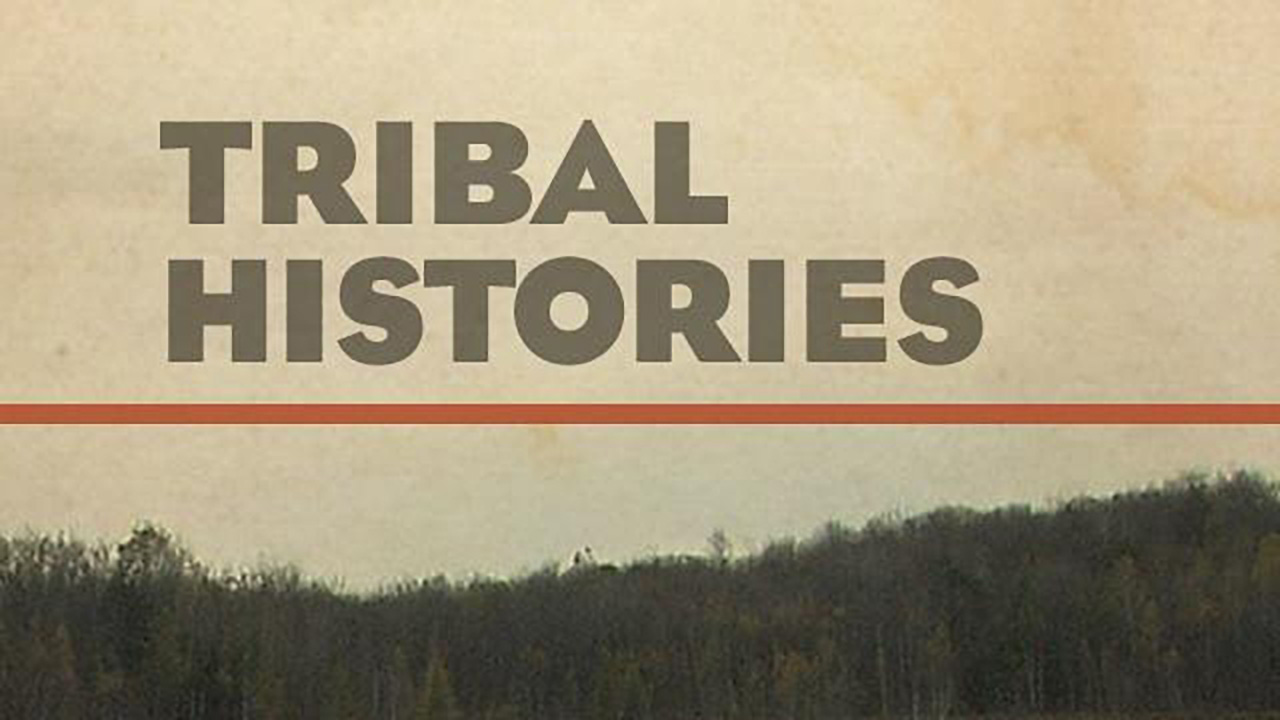







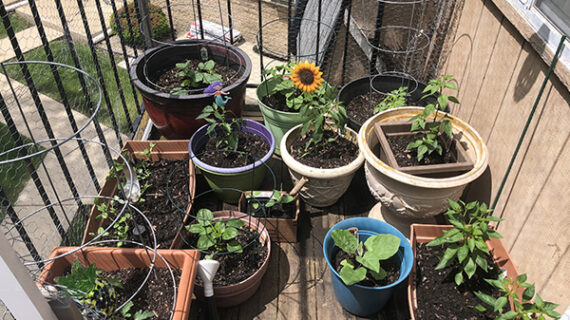

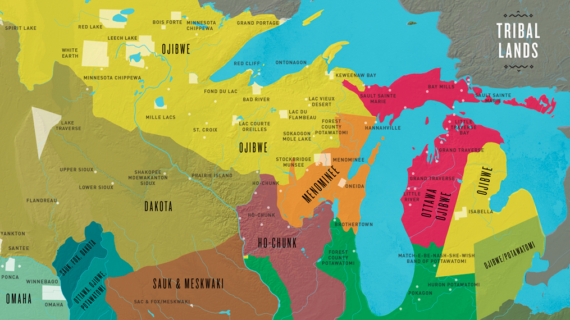
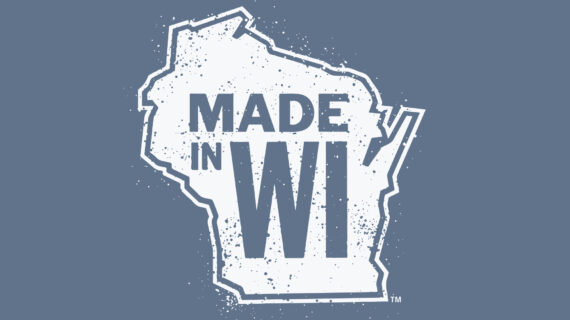
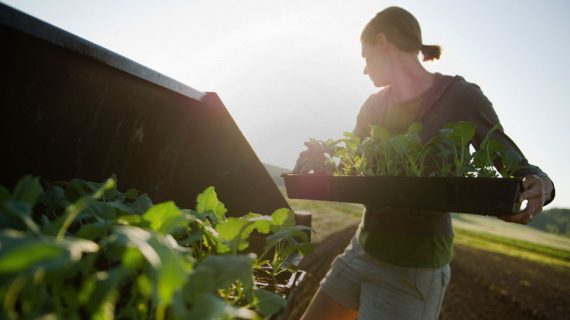
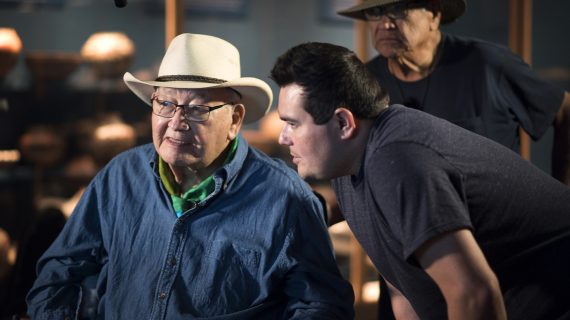


Follow Us